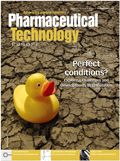News
With the future of healthcare revolving more and more around patient empowerment, data and healthy outcomes, the big question is can the traditionally slow and reserved pharma industry keep up with the new era?
Bright future for Pharma 3.0
With the future of healthcare revolving more and more around patient empowerment, data and healthy outcomes, the big question is can the traditionally slow and reserved pharma industry keep up with the new era?
So far, it's not looking too bad. According to Ernst & Young's Progressions: Building Pharma 3.0 report, pharma has accepted that it must do more than simply develop and manufacture products. In 2010 alone, pharma's investment in smart phone apps, educational websites, social media platforms, wireless devices and other programmes increased by 78%.
This new era — referred to as Pharma 3.0 by many — will also be characterised by the entry of non-traditional players, such as IT providers and retailers. Investments made by these new entities are far outpacing those made by pharma, creating the challenge to get a move on or risk being left behind!
"New entrants to the healthcare industry are clearly committing much more to business model innovation than pharma companies," said Carolyn Buck Luce, Global Pharmaceutical Leader at Ernst & Young, in a press statement. "The companies that succeed in this new healthcare ecosystem will do so by developing innovative outcomes-focused offerings through structured, systematic and scalable approaches to business model innovation. Just as importantly, pharma companies should demonstrate to new players in the healthcare space why the unique insights they can provide related to patient outcomes will make them indispensable partners."
But at least pharma has made a good start. Many of the investments made so far have been in the area of mobile health technology, with one in every two initiatives in 2010 targetting this area. According to Ernst & Young, mobiledriven health (m-health) is set to outstrip the internet as a healthcare communications platform, particularly in light of the fact that mobile phone ownership outpaces internet access. The advent of smart phones as an alternative to a networked computer and their ability to run apps has proven popular with pharma companies. Previously focused on diabetes management tools, new apps are emerging in many other disease areas, ranging from tools that help patients and consumers to track vaccination schedules, or that manage haemophilia treatment, to apps that can find cancer clinical trials within 150 miles of a certain location.
Changing business models
It's not just in new technologies where pharma is making progress either; companies are also changing their business models to improve patient outcomes using more holistic approaches, including disease management, coordinated care and expansion across different stages of care. A number of pharma companies are already partnering with technology and ehealth firms that enable patients to manage their health more effectively and share their personal data with healthcare professionals more safely. According to Ernst & Young, the pharma companies that will be successful in the new era will be those that can establish strategic partnerships and collaborations that focus on patient outcomes and consumer experience.
"Success in Pharma 3.0 will require diverse capabilities — from the ability to mine insights from vast pools of dissimilar health data, to rural distribution networks in emerging markets and wireless communication platforms," Patrick Flochel, EMEIA Life Sciences Leader at Ernst & Young explained. "No single company has everything that it will take. And in today's resource-strapped business climate, companies will benefit by leveraging investments that other companies have already made, rather than reinventing every wheel."
Pharmtech blog
Flu vaccine investigation
A possible link between narcolepsy and GSK's H1N1 vaccine, Pandemrix, has led to a call from the WHO for further investigation. Cases have been reported in several countries, but the majority come from Sweden, Finland and Iceland.
Read more at: www.pharmtech.com/narcolepsy
Sanofi acquires Genzyme
Sanofiaventis and Genzyme have finally agreed on an acquisition deal that values Genzyme at roughly $20.1 billion, or $74 per share. The deal is expected to close in Q2 of 2011. This longawaited conclusion closes months of speculation by investors and media, and negotiation between the companies.
Read more at: www.pharmtech.com/sanofideal
US lethal injection woes
A shortage of sodium thiopental, which is used in lethal injections, has forced US states to look for alternate suppliers, which are not always FDA approved. The situation has led to a federal lawsuit seeking to block imports of sodium thiopental that also raises questions about the way the FDA controls imported drugs.
Read more at: www.pharmtech.com/lethal
Reinventing R&D
A study examining the success rate of drugs moving through clinical development has revealed lower success rates in earlystage clinical development compared with previous years. Additionally, the study shows greater success rates for large-molecule drugs compared with their smallmolecule counterparts.
Read more at: www.pharmtech.com/reinventing

Transformations in Drug Development for Cell and Gene Therapies
March 28th 2025As a recognized leader in immunophenotyping for clinical trials, Kevin Lang from PPD discusses how spectral flow cytometry is transforming drug development, particularly in cell and gene therapies like CAR-T. He also dives into his award-winning research, including his 2024 WRIB Poster Award-winning work, and his insights from presenting at AAPS PharmSci360.
Advancing Clinical Trials with Spectral Flow Cytometry: A Conversation with Kevin Lang
March 28th 2025As a recognized leader in immunophenotyping for clinical trials, Kevin Lang from PPD discusses how spectral flow cytometry is transforming drug development, particularly in cell and gene therapies like CAR-T. He also dives into his award-winning research, including his 2024 WRIB Poster Award-winning work, and his insights from presenting at AAPS PharmSci360.